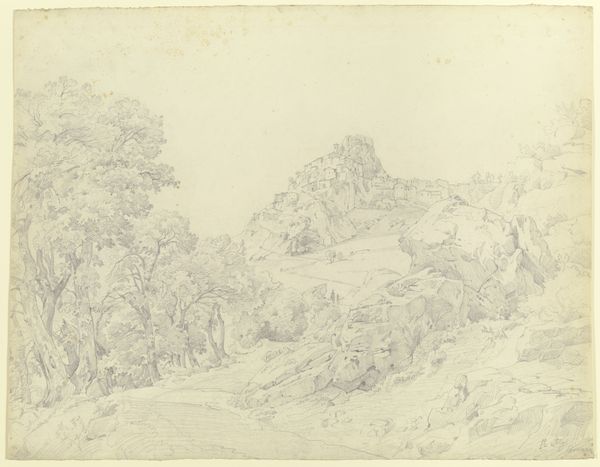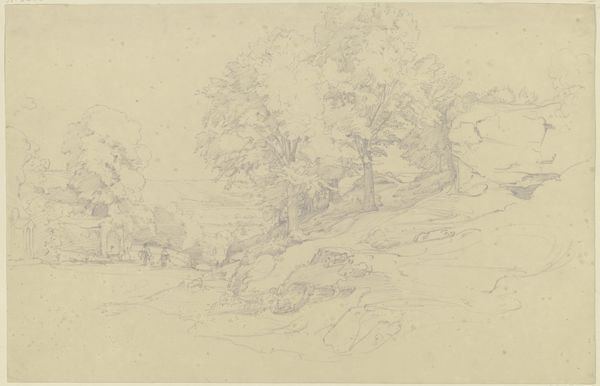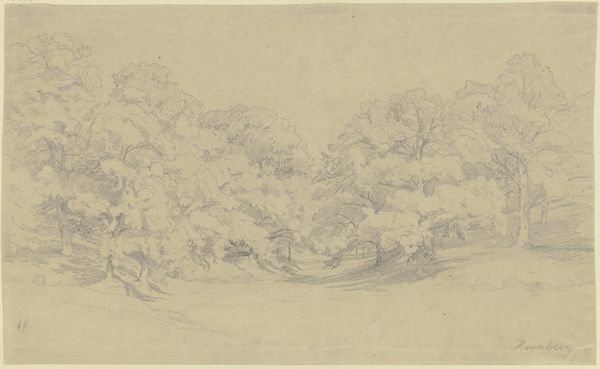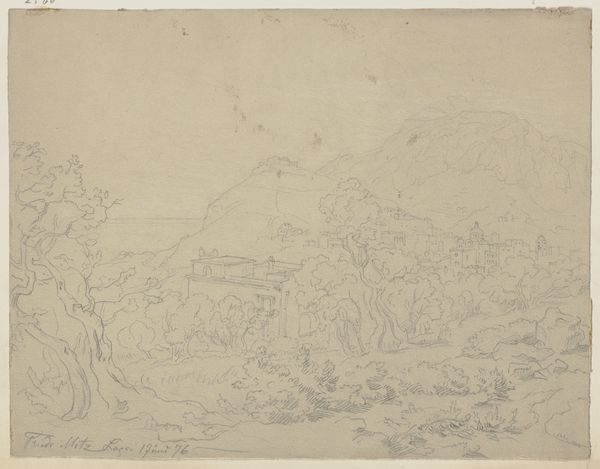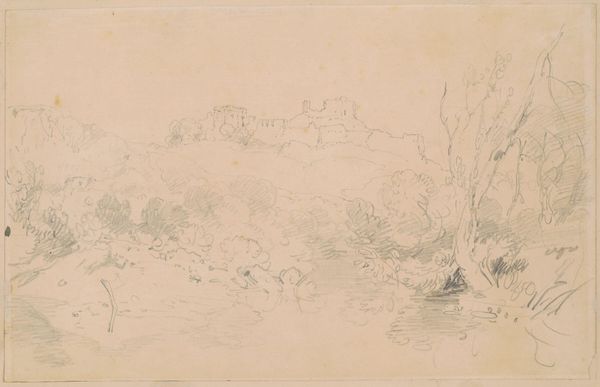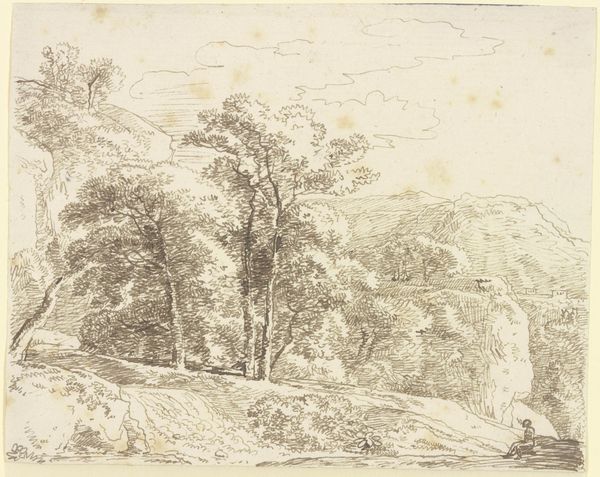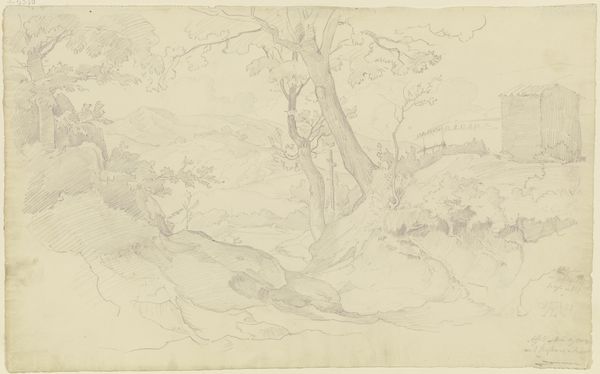
drawing, paper, pencil
#
drawing
#
landscape
#
paper
#
romanticism
#
pencil
#
academic-art
Copyright: Public Domain
Curator: This drawing, made with pencil on paper around 1830-1831, captures the Sabiner Mountains, with a cluster of pine trees in the foreground. August Lucas is the artist behind this romantic landscape, currently residing here in the Städel Museum. What strikes you most about it? Editor: Immediately, the delicate, almost ghostly quality of the pencil lines. It feels transient, like a memory fading at the edges. There's a melancholic atmosphere. Curator: Interesting, especially given Lucas’s focus on the arrangement of elements within the landscape. Note how the pines provide a structured contrast to the less defined mountains. It's a classic foreground-background dichotomy. Editor: But those choices, those contrasts aren't innocent. Think about how Romanticism itself positions the natural world. Is it simply there for aesthetic contemplation, or is it meant to reinforce a particular understanding of power, of humanity's place within it? Curator: You bring up a compelling point. Lucas employs academic techniques, carefully composing the scene, so there is certainly intention. The detail in the pines versus the hazier mountains creates depth but also perhaps a sense of dominion. Editor: Precisely. These landscapes often functioned to solidify ideas about national identity and the “sublime” experience, concepts which, during the period, were deeply entwined with colonial expansion and socio-economic disparities. Curator: It’s fascinating how you bring forward those connections. On the one hand, the piece operates formally, showcasing technical skill and classical composition. On the other, it becomes part of a much broader discussion around representation and ideology. Editor: And recognizing that complexity allows us to move past a simple aesthetic appreciation, engaging more critically with its cultural significance. Curator: Indeed, it encourages a deeper look. Thanks to August Lucas, we are having that very discussion here today. Editor: It goes beyond art—it helps us investigate society!
Comments
No comments
Be the first to comment and join the conversation on the ultimate creative platform.
